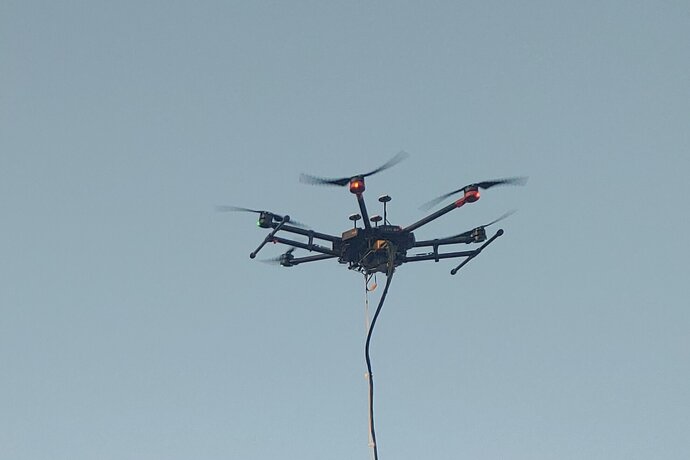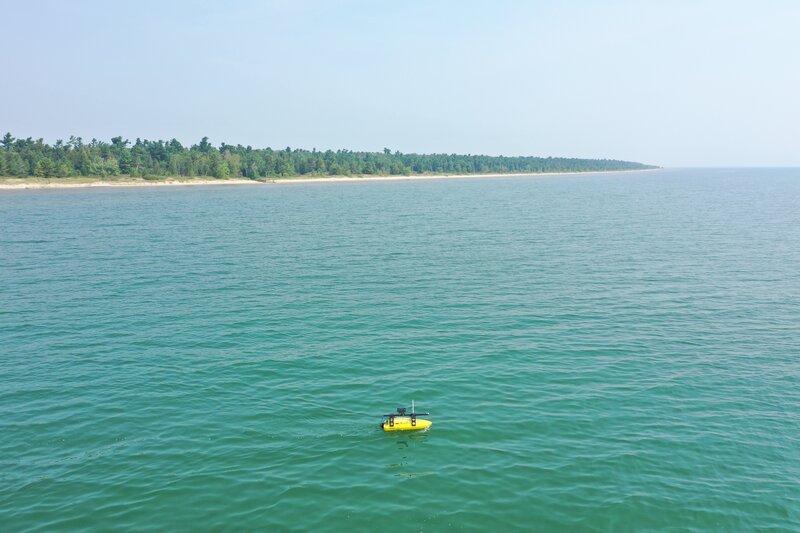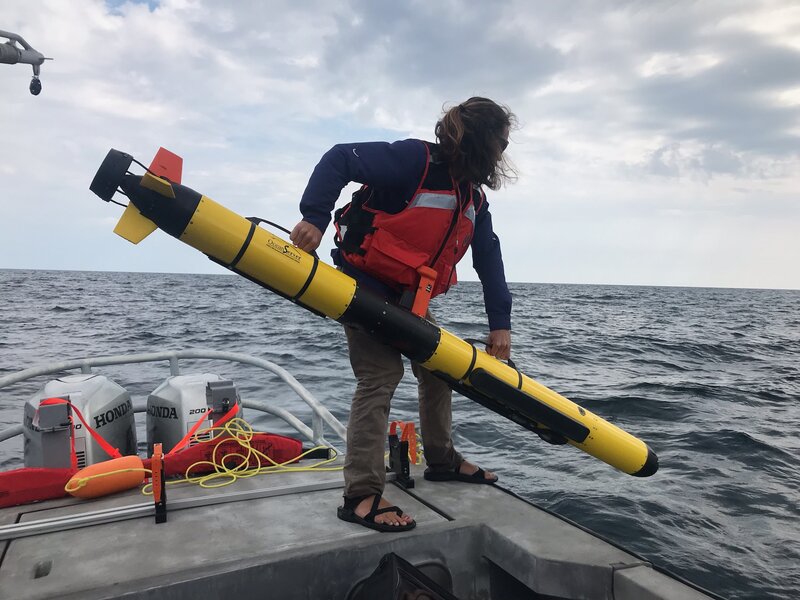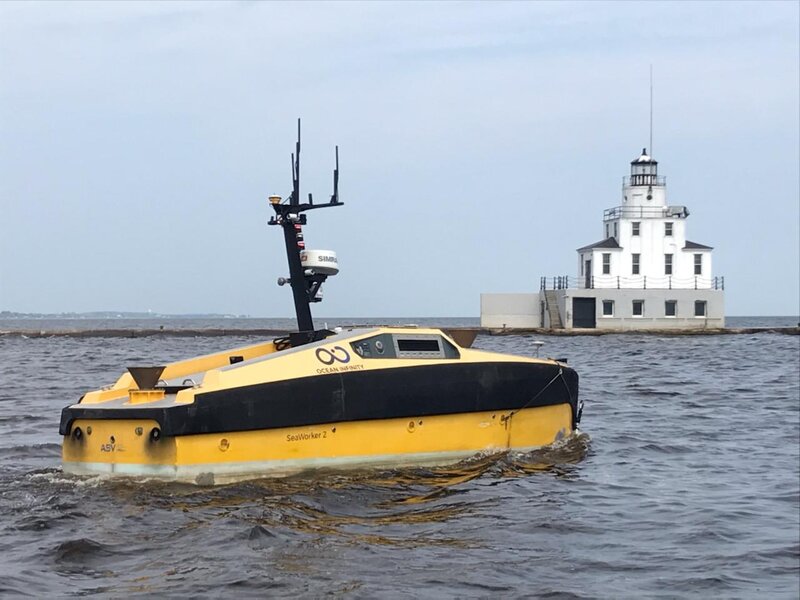
By Joseph Hoyt, NOAA Office of National Marine Sanctuaries
The biggest perk about being an archaeologist is the sense of exploration when you start a field project. Gather the right team, assemble the right bits of technology, sprinkle in a little nice weather, and that sense of exploration can turn into discovery. That’s exactly the opportunity this team has as we begin research in the newly designated Wisconsin Shipwreck Coast National Marine Sanctuary.

This drone, operated by a team from University of Miami and Marine Magnetics, is outfitted with a magnetometer that can detect iron objects in the survey area. The drone is crucial to this project as it covers areas that are too shallow for the other vehicles. Image courtesy of Madeline Roth, NOAA Office of National Marine Sanctuaries. Download largest image (jpg, 678 KB).
We have assembled a complex array of tools and scientific expertise from across the country to come together to learn more about the incredible shipwrecks off the coast of Wisconsin that connect us to the maritime roots of the region. The team from University of Miami was first out of the gate, deploying a large uncrewed aerial vehicle equipped with a magnetometer, a device that senses fluctuations in the magnetic field based on the presence of iron objects. This is a really helpful tool in the project area off Rawley Point in Lake Michigan, where huge variations in sediment periodically bury and unbury entire shipwrecks. Watching this drone take off and run a perfect grid survey gave me a sense that the future has arrived. It really fills a gap in our ability to survey effectively in surf zones, where many shipwrecks occur.

The team from University of Delaware brought a handful of autonomous vehicles to use on the survey. The small vessel pictured here is used for nearshore survey work as it is operated from a shore station. Image courtesy of Mark Lundine, University of Delaware. Download largest image (jpg, 6.8 MB).
We are also fortunate to have a team of experts from the University of Delaware deploying a fleet of autonomous surface vehicles as well as an autonomous underwater vehicle. These systems are equipped with a variety of sensors, including side-scan sonar, multibeam sonar, cameras, and magnetometers, to help us to detect shipwrecks above and below the lakebed. All of these systems are uncrewed and pre-programmed to run missions. So far, watching this fleet of robots fan out and collect data from the shallows just off the beach down to hundreds of feet deep has a distinct sci-fi feeling to it!

Unlike the autonomous surface vehicles, autonomous underwater vehicles are not constrained to surface operation. This vehicle is being used to conduct targeted assessments of known shipwrecks in the sanctuary. Image courtesy of Joseph Hoyt, NOAA Office of National Marine Sanctuaries. Download largest image (jpg, 672 KB).
While the overarching goal aims to characterize previously discovered shipwrecks as well as discover new ones, this work seeks to do a number of other things of equal importance. The research team from NOAA is learning how to build capacity and partnerships in this region based on real world operations, creating a solid foundation for the ongoing work of the new sanctuary. It also serves to bring together research partners and tech companies to develop and refine the tools of exploration.

Ocean Infinity uses autonomous surface vehicles like this to conduct surveys around the world. This project is the first time the C-Worker has been used in the Great Lakes. Image courtesy of Joseph Hoyt, NOAA Office of National Marine Sanctuaries. Download largest image (jpg, 119 KB).
In addition to our academic partners, private sector companies Seafloor Systems and Ocean Infinity have partnered on this project to evaluate and refine novel applications of their systems. Likewise, Marine Magnetics is collaborating with NOAA to field test prototype equipment and methodologies for both aerial and diver-based magnetic surveys. This mix of public/private partnerships along with academia and the local community is a great example of how NOAA’s Office of National Marine Sanctuaries operates. It’s an incredible privilege to be a part of the first of many such efforts in this special place.
Published August 12, 2021